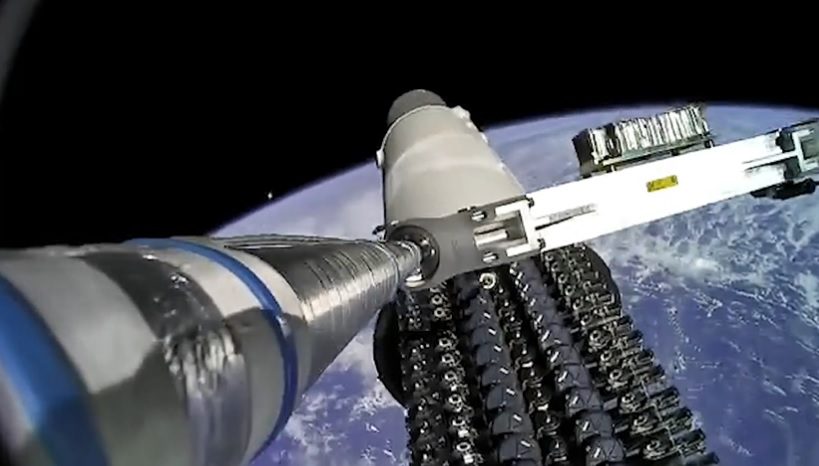SpaceX is transitioning to a new design of spacecraft as it takes its Starlink constellation forward. The Starlink Group 6-1 mission was launched on a Falcon 9v1.2FT Block 5 rocket at 2313 GMT on 27 February from Cape Canaveral, Florida, as part of the Starlink Gen 2 constellation.

The first Starlink V2 Mini satellites are released on their dispenser. Courtesy: Elon Musk via Twitter
First Starlink v2 satellites reach orbit pic.twitter.com/0l08568mJ9
— Elon Musk (@elonmusk) February 28, 2023
Only 21 satellites were carried. They used a new V2 Mini spacecraft bus design, which is a forerunner to the eventual V2. While smaller than the planned V2, they are about three times heavier at around 775 kg than the current 260 kg V1.5 design – the reason why only 21 were carried on the flight.
The V2 Mini satellites were launched into an initial orbit of 373 x 365 km at 43 degrees inclination. From here they will raise themselves to their final operational orbit about 200 km higher employing Hall effect electric thrusters. These use Argon rather than the Starlink V1.5’s Krypton propellant. The reusable B1076 first stage landed on the drone barge A Shortfall Of Gravitas located 637 km downrange in the Atlantic.







